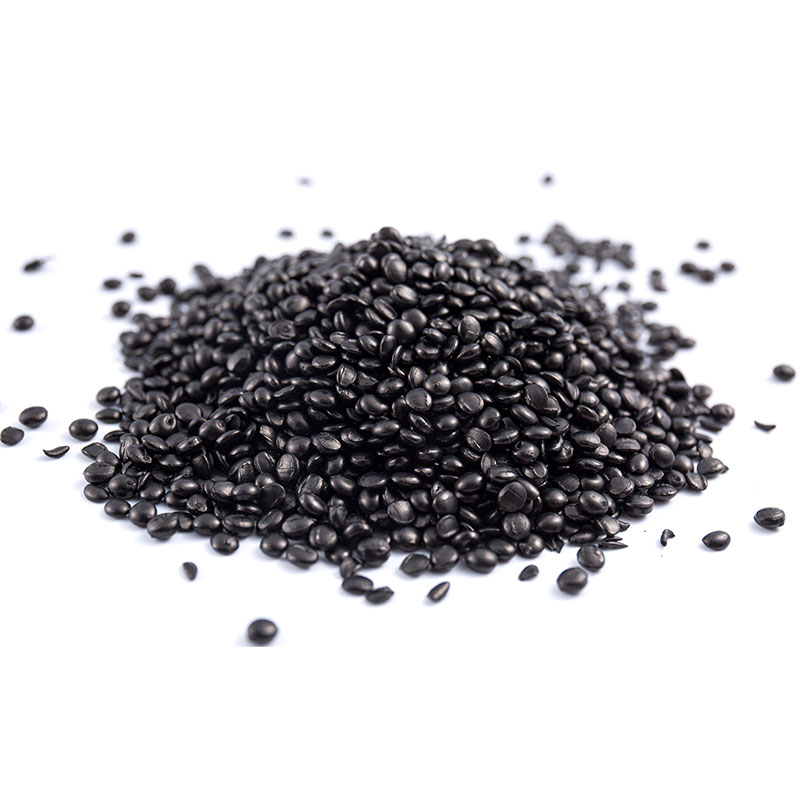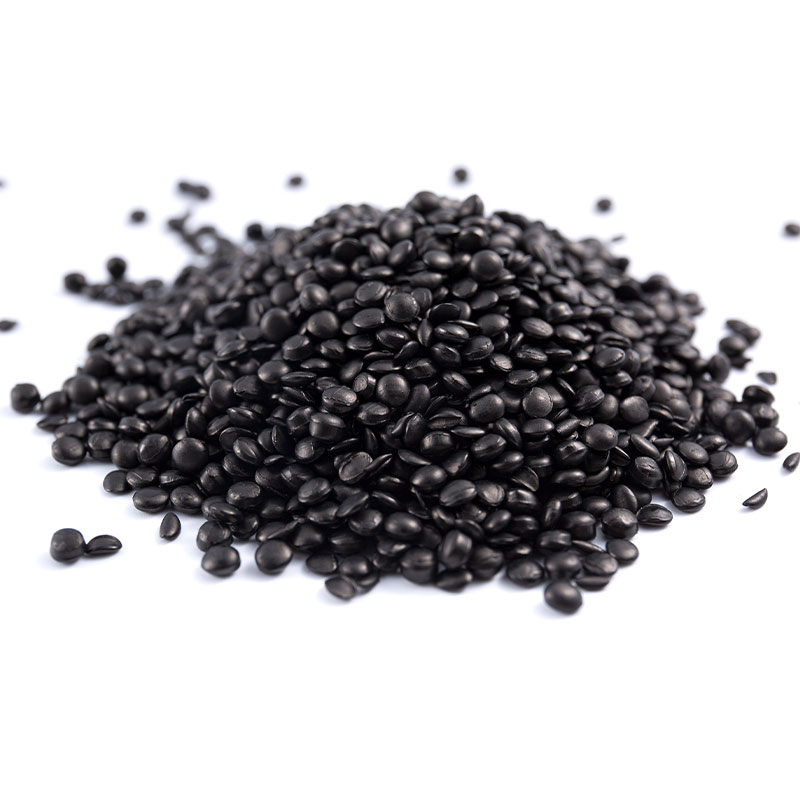What Are the Main Components and Functions of Agricultural Film Black Masterbatch?
Agricultural film black masterbatch is a functional additive specifically designed for agricultural film materials, primarily used to enhance the performance of agricultural films in greenhouse environments and other agricultural settings. The key components of black masterbatch include carbon black, carrier resins, and some auxiliary additives. Carbon black is the most crucial ingredient, as it has strong ultraviolet (UV) absorption capabilities and can effectively block UV radiation. Its role goes beyond just color change and has a significant impact on the film’s resistance to aging, UV protection, thermal insulation, permeability, and other properties.
In agricultural applications, the addition of black masterbatch enables the film material to serve multiple functions, helping agricultural films resist the damaging effects of harsh environmental conditions, thereby extending the life of the film. The use of black masterbatch also improves the mechanical properties of the film, such as tensile strength, tear resistance, and thermal stability, making the overall film more durable. By properly formulating the carbon black content in black masterbatch, agricultural films can achieve uniform optical properties, further enhancing the quality and performance of the material. These advantages make black masterbatch widely used in the production and processing of agricultural films, especially in fields like greenhouses, horticulture, and other agricultural infrastructure.
How Does Agricultural Film Black Masterbatch Contribute to Extending the Lifespan of Agricultural Films?
The lifespan of agricultural films is influenced by several factors, including UV radiation, temperature fluctuations, humidity variations, and mechanical wear and tear. Traditional agricultural films, lacking effective UV protection, are more susceptible to damage from prolonged UV exposure, leading to accelerated aging, cracking, and brittleness, ultimately shortening the film’s useful life. However, E-LUCK agricultural film black masterbatch, with its excellent UV resistance and anti-aging properties, significantly enhances the durability of agricultural films.
The carbon black component in black masterbatch absorbs and blocks UV radiation, preventing UV light from penetrating the film material. This action slows down the photodegradation process that occurs with exposure to sunlight, thereby extending the film’s lifespan. Compared to traditional films that do not incorporate black masterbatch, those made with black masterbatch are better protected from UV-induced damage, resulting in a much longer service life. Additionally, carbon black also enhances the film’s resistance to oxidation, reducing the harmful effects of environmental oxidants on the film and further improving its longevity.
Furthermore, E-LUCK black masterbatch improves the mechanical strength and tear resistance of the film, which enhances its performance in extreme weather conditions such as high winds and heavy rain. In comparison, traditional agricultural films are more prone to tearing or breaking under such harsh conditions.
How Does Agricultural Film Black Masterbatch Help Control Temperature and Humidity?
Greenhouse films and agricultural films play a critical role in regulating internal temperature and humidity, and E-LUCK agricultural film black masterbatch helps adjust these environmental factors to create the most optimal conditions for plant growth.
First, black masterbatch has excellent heat absorption and insulation properties. As the agricultural film absorbs solar radiation, the carbon black component in the masterbatch effectively absorbs and transforms the UV and visible light energy into heat, which is evenly distributed across the film surface. During the daytime, the film absorbs solar heat, keeping the greenhouse warm. At night, the black masterbatch reduces the loss of heat, maintaining a stable temperature inside the greenhouse. This feature is especially critical for greenhouses in colder seasons, as it helps reduce heating costs while providing a more stable environment for plant growth.
Secondly, E-LUCK black masterbatch helps regulate humidity within the greenhouse. Permeability is an important characteristic for agricultural films, and black masterbatch enhances the film’s moisture permeability, allowing it to adjust to changing environmental conditions. During the day, the film can release excess moisture from the greenhouse to avoid excessive humidity. At night, it can reduce moisture evaporation, maintaining optimal humidity levels and preventing conditions that are too dry. This ability to regulate both temperature and humidity creates an ideal environment for crops, reducing the risk of disease while promoting healthy plant growth.
Performance Differences Between Agricultural Films Using Black Masterbatch and Those Without
The performance of agricultural films directly impacts the quality of the environment in which crops are grown, thus affecting crop yield and health. Agricultural films made with E-LUCK black masterbatch show significant advantages over films that do not use black masterbatch in several key areas.
First, the most obvious difference lies in UV resistance. Traditional transparent or white films that do not incorporate black masterbatch often fail to protect against UV radiation, leading to photodegradation over time. This results in color fading, material brittleness, and cracking. In contrast, agricultural films made with E-LUCK black masterbatch, thanks to the carbon black content, absorb and block UV rays, preventing UV penetration into the material and significantly extending the film’s service life. This UV shielding feature allows black masterbatch films to be more durable and reduces the frequency of film replacements, lowering the overall long-term cost compared to traditional films.
Secondly, when it comes to temperature control, films made with black masterbatch demonstrate better thermal insulation than films without black masterbatch. Black masterbatch films absorb solar radiation and effectively reduce heat loss, maintaining a stable internal temperature within the greenhouse. On the other hand, traditional agricultural films tend to lack this thermal insulation capability and often result in temperature fluctuations, which can adversely affect crop growth.
Additionally, E-LUCK black masterbatch films perform better in humidity control. By adjusting the permeability of the film, black masterbatch films can more precisely regulate the moisture levels inside the greenhouse, preventing the environment from becoming too humid or too dry. Traditional films generally have poorer moisture control and can lead to high or low humidity levels, negatively impacting crop health.
Moreover, black masterbatch films also have enhanced mechanical properties. The carbon black in the masterbatch strengthens the film’s tensile strength and tear resistance, enabling it to better withstand extreme weather conditions like strong winds or heavy rain. Traditional films, lacking this reinforcement, are more susceptible to damage in adverse weather, which can affect the controlled environment within greenhouses.
Lastly, E-LUCK black masterbatch is environmentally friendly, meeting international environmental standards. In contrast to some traditional agricultural films, which may contain harmful additives that could pollute the environment during degradation, E-LUCK’s black masterbatch helps create more sustainable and eco-friendly films, supporting green agricultural practices.

 English
English Español
Español











